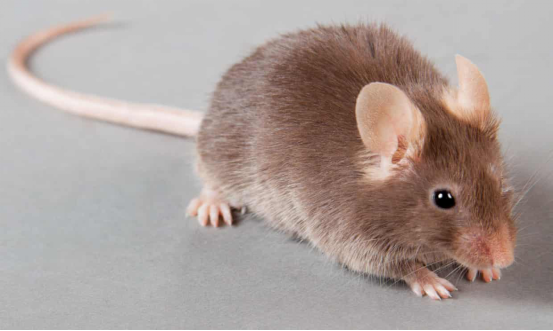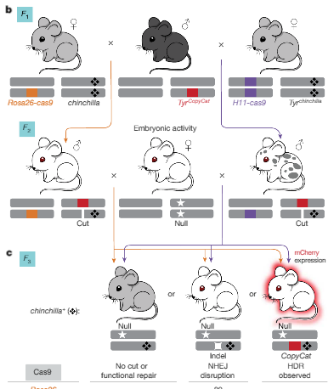Scientists rewrite mouse DNA to spread genes in populations

Recently, scientists have demonstrated for the first time in mammals a controversial technology that can spread specific genes throughout the wild species. Researchers in the United States have confirmed that "gene-driven" can alter the genetic makeup of mice, enabling them to carry DNA designed by scientists.
Gene-driven work is about breaking conventional genetic rules to ensure that specific genes (usually modified genes) spread between generations at higher than normal levels.
This technology has attracted great interest from researchers because of its potential to fight diseases such as malaria, such as by rewriting the genetic makeup of mosquitoes carrying Plasmodium. Experimental gene driving has been used to sterilize mosquitoes carrying disease. If these mosquitoes are released back into the wild, their populations will face a sharp decline. Other gene drivers increase the resistance of insects to parasitic infections.
Many scientists suspect that the same approach may prove to be a more effective alternative to the existing laborious and expensive invasive species removal program.
Last year, the world's largest invasive species removal project eventually shunned South Georgia Island from the destruction of the island by wild mice for more than 250 years.
However, despite the potential of this technology, many researchers remain cautious, because if the technology is used carelessly, it will lead to a huge disaster for the entire ecosystem.
In 2016, the National Academy of Sciences stipulated that more work needs to be done to understand and control gene drivers before genetically driven drugs are used safely in the wild.
Kimberly Cooper, a biologist at the University of California, San Diego, hopes to create a genetic drive in mice, not to destroy them, but to carry mutations that cause human disease. This can help scientists better understand some common human diseases.
The study, published in Nature, after a series of failed attempts, found a way to genetically engineer mouse embryos, allowing female mice to spread modified genes faster than normal genetic rules. Descendants. This method has no effect on male mice, but can produce mutations in it.

Image source: Nature
Cooper said: "Our findings suggest that using this method in mice is more complicated than insects, which raises the question of whether using this method to release genes in the wild can achieve the efficiency we need. One concern is that Genetic mutations in male mice make them resistant to gene drive, and this limits the method used to remove invading rodents."
However, Cooper still sees gene-driven uses in the lab. It can be used to manufacture a variety of genetically deficient animals associated with human diseases such as cancer, diabetes and arthritis. She said: "We hope that we can complete all these changes individually, understand each change, and then integrate them all together."
Christophe Bo ë te of the University of Montpellier said that although this is a proof of principle for mammalian gene-driven, it shows that using this method to control invasive species is only a distant expectation.
He said: "The results of their research show that this tool for eradicating populations in the wild is far from being realized. Such low efficiency means that it takes a lot of time and there will be natural choices that are resistant to gene drive. Of course this is just The tiny technical part of these issues. There are still many important ethical, regulatory, and ecological issues to consider before applying this approach to bioprotection."
Cooper said that it is vital for gene-driven researchers to take responsibility and discuss their work with the wider community.
She said: "There will always be people who are dissatisfied, because there are always people who think that this work should not be carried out. I don't know if this is really useful. But it is really troublesome, because who has the right to speak? Everyone has an opinion, so nothing can be done. I think researchers in this field are very cautious scientists. What is important is that this is a very powerful technology."
Original link: https://
Source: Ministry of Science and Technology website
Retractable Cable Reel,Portable Water Hose Reel,Retractable Water Hose Reel,Retractable Electrical Cable Reel
NINGBO QIKAI ENVIRONMENTAL TECHNOLOGY CO.,LTD , https://www.cxhosereel.com